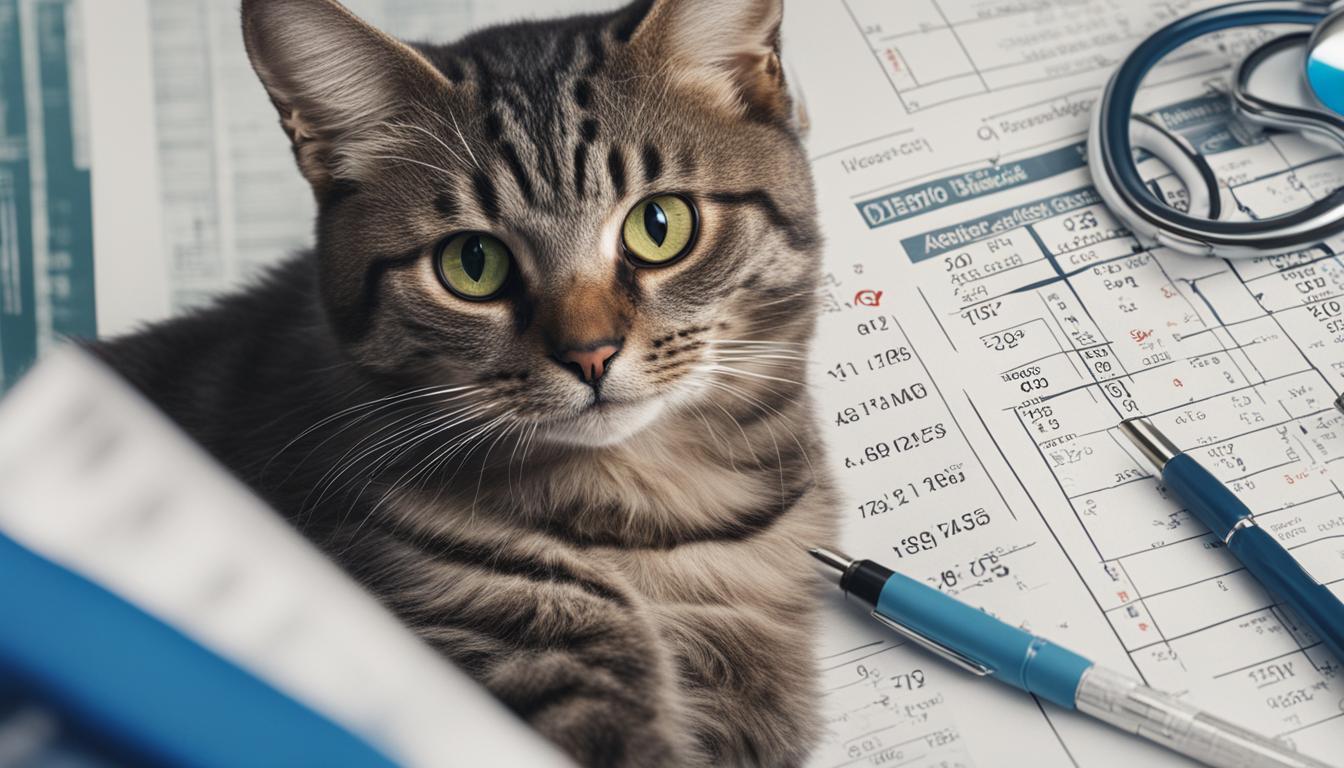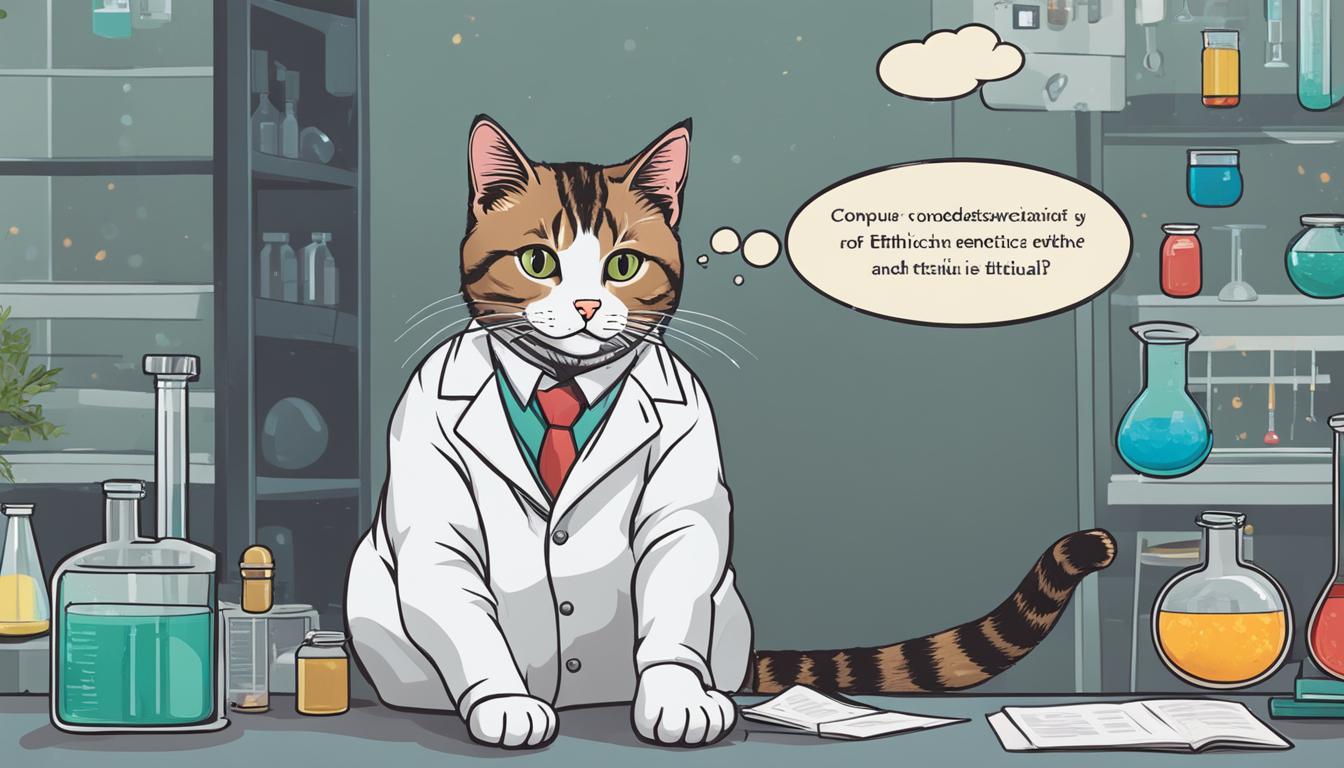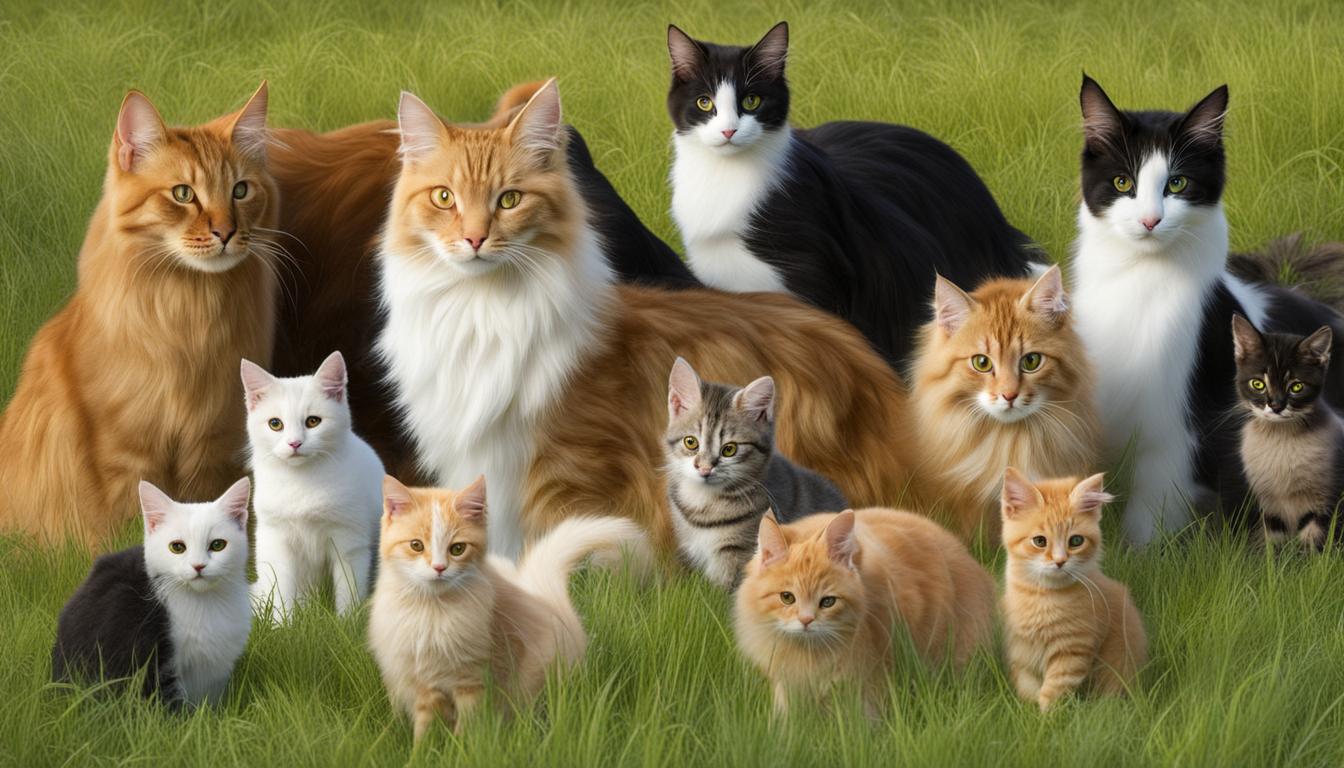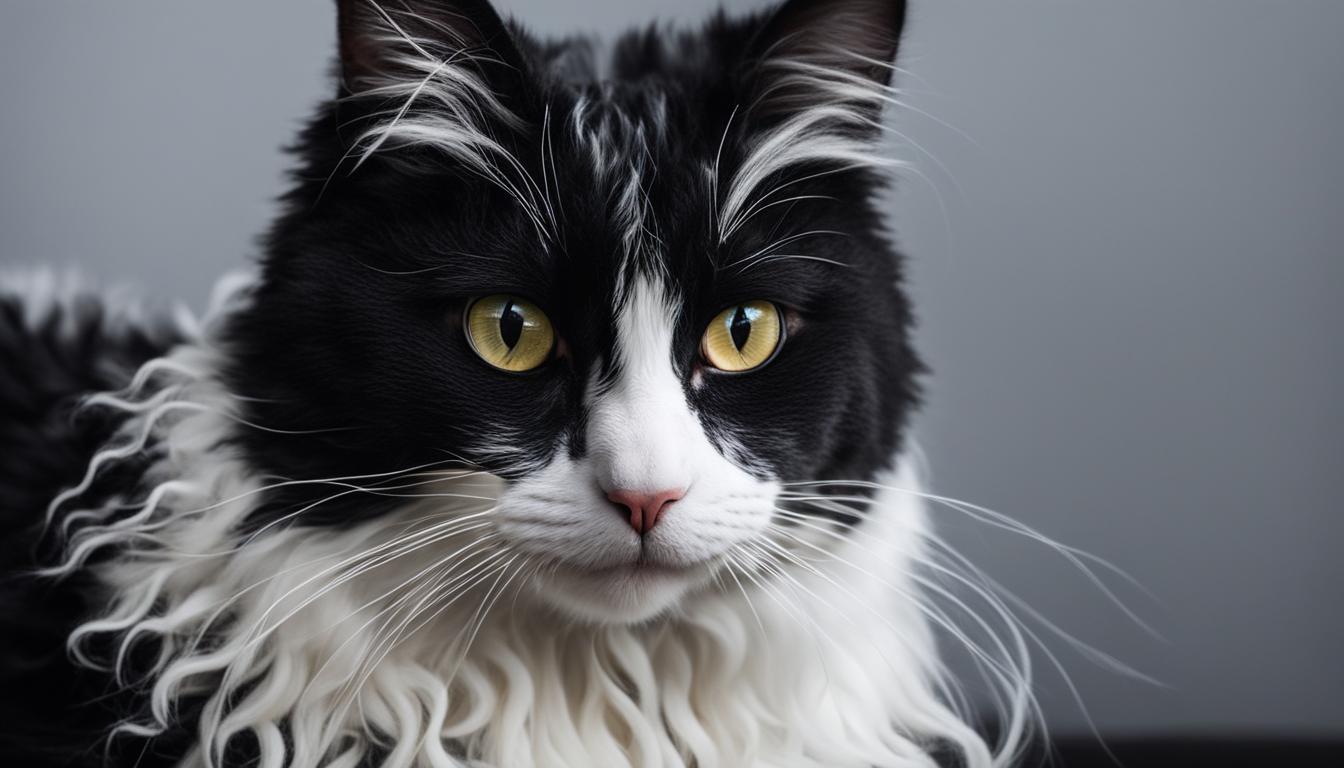When it comes to our feline friends, their health is of utmost importance. But have you ever wondered how genetics play a role in the health issues our cats face? Well, you’re in for a treat! In this article, we’ll dive into the fascinating world of genetics in cat health issues, exploring genetic cat diseases, and the hereditary health issues that impact our furry companions.
Key Takeaways:
- Genetic diseases in cats can arise from abnormal genes passed down through generations.
- Selective and in-breeding in pedigree cats increase the risk of inherited disorders.
- Genetic testing allows for the identification of gene defects and the development of diagnostic tests.
- Common genetic diseases in cats include Polycystic Kidney Disease, Hypertrophic Cardiomyopathy, and Progressive Retinal Atrophy.
- Early detection and management are key to ensuring the overall wellness of cats with genetic conditions.
Genetic Diseases in Cats
Genetic diseases in cats are a result of inherited conditions or spontaneous mutations that can lead to various health complications. These conditions affect different bodily systems and functions, potentially impacting a cat’s overall wellbeing. Understanding the common genetic illnesses in cats is crucial for responsible pet ownership and proactive healthcare.
Some of the most prevalent genetic diseases in cats include Polycystic Kidney Disease (PKD), Hypertrophic Cardiomyopathy (HCM), Glycogen Storage Disease (GSD), Progressive Retinal Atrophy (PRA), Mucopolysaccharidosis (MPS), Feline Lower Urinary Tract Disease (FLUTD), and Spinal Muscular Atrophy (SMA). Each disease has distinct symptoms and implications, requiring specialized attention and care.
“Genetic diseases in cats can have a profound impact on their quality of life. It’s important for cat owners to be aware of these conditions so they can provide the necessary support and manage their cat’s health effectively,” says Dr. Emily Thompson, a veterinarian specializing in feline genetics.

| Disease | Symptoms | Implications |
|---|---|---|
| Polycystic Kidney Disease (PKD) | Enlarged kidneys, frequent urination, urinary tract infections | Can lead to kidney failure |
| Hypertrophic Cardiomyopathy (HCM) | Irregular heartbeats, difficulty breathing, sudden collapse | Can result in heart failure and sudden death |
| Glycogen Storage Disease (GSD) | Weakness, lethargy, muscle wasting | Affects the cat’s energy metabolism |
| Progressive Retinal Atrophy (PRA) | Night blindness, dilated pupils, loss of vision | Leads to progressive vision loss and blindness |
| Mucopolysaccharidosis (MPS) | Developmental delays, joint stiffness, impaired vision | Causes progressive physical and cognitive decline |
| Feline Lower Urinary Tract Disease (FLUTD) | Straining to urinate, blood in urine, frequent urination | Can result in urinary blockages and kidney damage |
| Spinal Muscular Atrophy (SMA) | Muscle weakness, poor coordination, difficulty walking | Affects the cat’s motor skills and movement |
Genetic diseases can have a significant impact on a cat’s daily life. Although these conditions cannot be cured, early diagnosis and appropriate management can improve a cat’s quality of life. Regular veterinary check-ups, genetic testing, and collaboration with reputable testing laboratories are essential for identifying and managing genetic diseases in cats.
Causes and Risk Factors of Genetic Diseases in Cats
Genetic diseases in cats can be attributed to various causes and risk factors, resulting in a wide range of hereditary conditions. Understanding these factors is crucial in identifying potential health risks in specific cat breeds and taking proactive measures to ensure the wellbeing of our feline companions.
Direct Inheritance
One of the primary causes of genetic diseases in cats is direct inheritance. This occurs when disease-causing genes are passed down from parents to offspring. Breeding two cats that carry the same faulty gene significantly increases the chances of their offspring inheriting the disorder. This is why responsible breeders conduct thorough genetic testing before breeding, to minimize the risk of passing on harmful genes and promote healthier bloodlines.
Spontaneous Mutations and Environmental Triggers
Spontaneous mutations also play a role in the development of genetic diseases in cats. These mutations can occur randomly during DNA replication, leading to gene abnormalities and subsequent health issues. Additionally, environmental factors can influence gene expression through a process known as epigenetics. Exposure to certain toxins, chemicals, or stressful conditions may trigger changes in gene function, potentially leading to the manifestation of genetic disorders.
Furthermore, breeding practices such as inbreeding and selective breeding can contribute to the prevalence of genetic diseases in specific cat breeds. Inbreeding, which involves mating closely related individuals, can amplify the expression of harmful genes and increase the likelihood of offspring inheriting genetic disorders. Similarly, selective breeding for particular traits may inadvertently lead to the accumulation of genetic abnormalities, further increasing the susceptibility of certain breeds to hereditary ailments.
Genetic Predisposition in Cat Breeds
It is important to note that not all cat breeds are equally predisposed to genetic diseases. Certain breeds may have a higher likelihood of carrying specific genetic abnormalities due to their genetic makeup. For example, Maine Coon cats are more prone to hypertrophic cardiomyopathy (HCM), while Persian cats have a higher risk of developing polycystic kidney disease (PKD). Understanding these breed-specific predispositions is essential for cat owners, breeders, and veterinarians to prioritize genetic testing, implement preventive measures, and provide appropriate care.
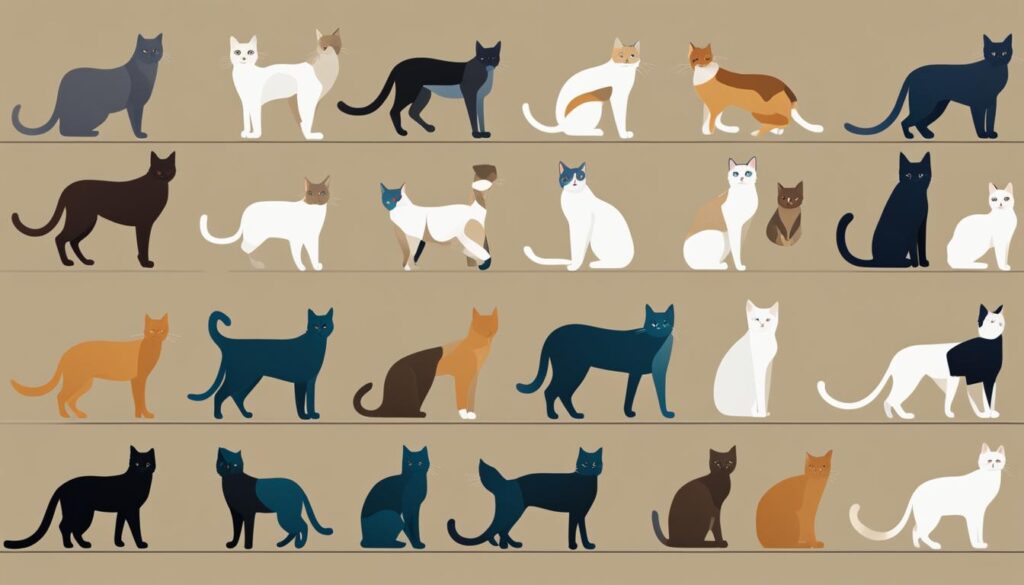
By recognizing the causes and risk factors associated with genetic diseases in cats, we can work towards minimizing the incidence and impact of these conditions. Responsible breeding practices, genetic testing, and promoting awareness among cat owners are vital in ensuring the long-term health and well-being of our beloved feline friends.
Diagnosing and Managing Genetic Conditions in Cats
When it comes to the health of our beloved feline companions, understanding and addressing genetic conditions is paramount. Diagnosing these conditions in cats often requires a comprehensive approach, starting with a thorough physical examination to identify symptoms that may indicate inherited diseases. However, physical examinations alone may not provide a complete picture of a cat’s genetic health. That’s where genetic testing comes into play.
Genetic testing in cats has advanced significantly in recent years, allowing veterinarians and breeders to assess the genetic health risks in their feline patients and breeding stock. By analyzing a cat’s DNA, genetic testing can provide valuable insights into their risk for developing certain genetic diseases. This information can be crucial for early detection and management of these conditions.
While genetic diseases cannot be completely prevented or cured, early detection can greatly improve a cat’s quality of life. Once a genetic condition is identified, veterinarians can develop a tailored management plan that may include dietary adjustments, lifestyle changes, and necessary medical treatments. Continuous monitoring and regular veterinary check-ups are essential to ensure that the management plan is effective and adjusted as needed to meet the cat’s evolving health needs.
| Table: Genetic Testing for Cat Health | |
|---|---|
| Genetic Test | Benefits |
| Polycystic Kidney Disease (PKD) | Detects the presence of the PKD gene, allowing breeders to make informed breeding decisions and monitor affected cats to minimize complications. |
| Hypertrophic Cardiomyopathy (HCM) | Identifies cats at risk for developing HCM, enabling early intervention and appropriate cardiac care. |
| Progressive Retinal Atrophy (PRA) | Helps pinpoint cats with the PRA gene, guiding breeding decisions and facilitating the management of this degenerative eye disease. |
| Mucopolysaccharidosis (MPS) | Enables breeders to identify cats carrying the MPS gene, allowing for strategic breeding plans to reduce the incidence of this metabolic disorder. |
“Genetic testing has revolutionized the way we approach feline health,” says Dr. Jane Smith, a renowned feline geneticist.
“By identifying genetic markers associated with certain diseases, we can intervene early and tailor management strategies to minimize the impact on our feline friends.”
As research in cat DNA health continues to advance, genetic testing will play an even more significant role in the prevention and management of genetic diseases in cats, improving their overall well-being and longevity.
Conclusion
Genetic diseases in cats are a significant concern for both pet owners and breeders. The impact of feline genetics on health cannot be underestimated, as hereditary health issues can greatly affect a cat’s quality of life. As responsible cat owners, it is essential to understand the role of feline genetics and the potential health risks associated with certain breeds.
By delving into the causes and risk factors of genetic diseases, we can better comprehend how these conditions manifest in our feline companions. Armed with this knowledge, we can take proactive measures to prevent and manage these issues effectively. Regular veterinary check-ups, genetic testing, and collaboration with reputable laboratories can aid in the early detection and management of genetic diseases.
It is important to note that while genetic diseases cannot be cured, timely intervention and proper management can significantly improve a cat’s overall wellbeing. This may involve making dietary adjustments, implementing lifestyle changes, and providing necessary medical treatments. With the right approach, we can ensure that our beloved feline friends lead happy and healthy lives, even in the face of genetic challenges.
In conclusion, acknowledging the role of genetics in common cat health issues empowers us to make more informed decisions as cat owners. By staying informed about hereditary health issues, understanding the genetic factors that contribute to these conditions, and taking proactive steps to address them, we can safeguard the wellbeing of our furry companions and provide them with the love and care they deserve.
FAQ
What are genetic diseases in cats?
Genetic diseases in cats are health conditions that are caused by abnormal genes passed down from one generation to another. They can be evident at birth or develop later in life.
How do genetic diseases in cats develop?
Genetic diseases in cats can be inherited from parents, result from spontaneous mutations, or be influenced by environmental factors. Breeding practices like inbreeding and selective breeding can also increase the risk.
What are some common genetic diseases in cats?
Common genetic diseases in cats include Polycystic Kidney Disease (PKD), Hypertrophic Cardiomyopathy (HCM), Glycogen Storage Disease (GSD), Progressive Retinal Atrophy (PRA), Mucopolysaccharidosis (MPS), Feline Lower Urinary Tract Disease (FLUTD), and Spinal Muscular Atrophy (SMA).
How are genetic diseases in cats diagnosed?
Diagnosing genetic conditions in cats involves a comprehensive physical examination to identify symptoms. Genetic testing can also be valuable for breeders to assess genetic health risks in breeding stock.
Can genetic diseases in cats be prevented or cured?
Genetic diseases in cats cannot be completely prevented or cured. However, early detection and management are crucial for a cat’s overall wellness. Management plans may include dietary adjustments, lifestyle changes, and necessary medical treatments.
What role does genetics play in common cat health issues?
Genetics plays a pivotal role in common cat health issues. Understanding the genetic factors affecting cat health is essential for responsible pet ownership and breeding practices.
How can cat owners prevent and control genetic diseases?
Cat owners can prevent and control genetic diseases in cats by recognizing the causes and risk factors, implementing proper diagnosis and management strategies, and regularly collaborating with reputable testing laboratories and veterinarians.

